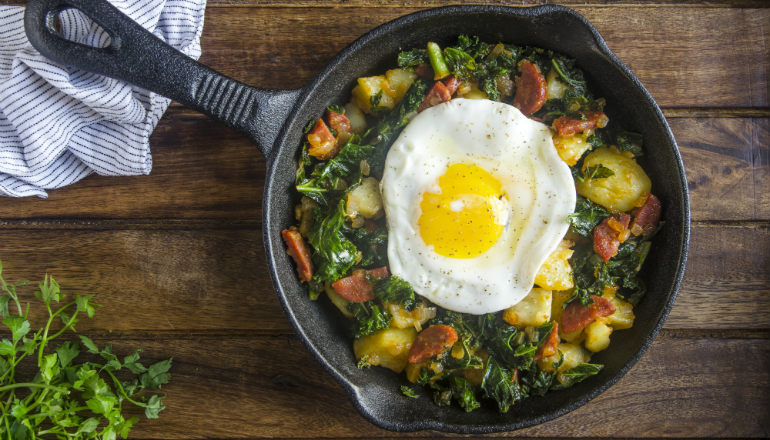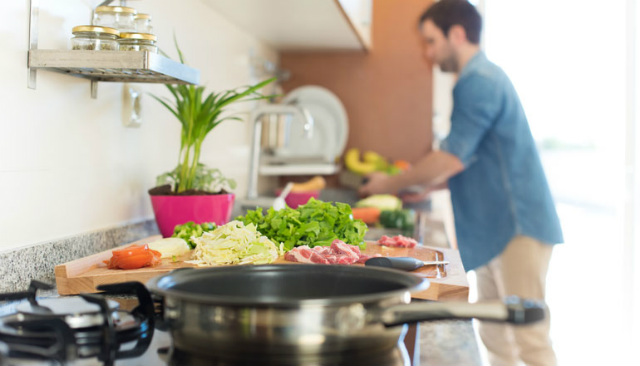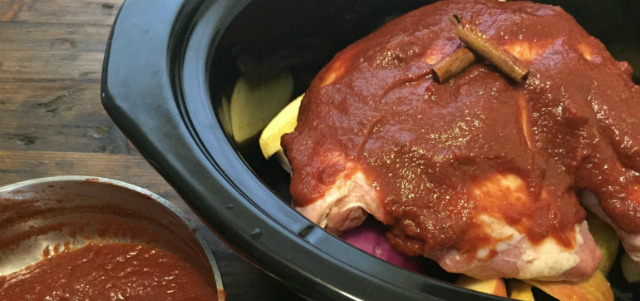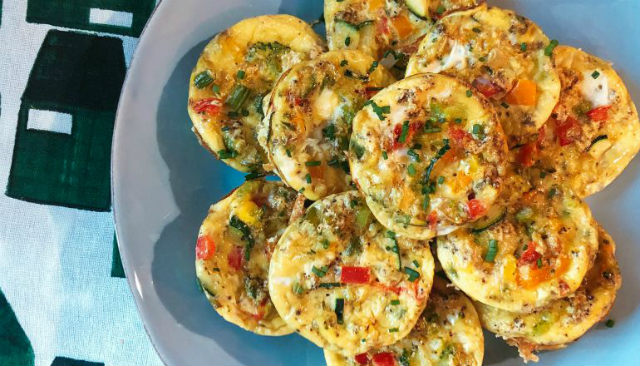
Whenever I tell people I am a registered dietitian who works with private clients, people assume I hand out meal plans and tell people to follow them. While this approach does work for short periods, it’s not ideal long term.
The real answer is to make your own meal plan.
This might sound intimidating but creating your own meal plan can actually save you time and effort. By using principles like those taught by the Whole Life Challenge, you can find an endless number of recipes and ideas appropriate for your goals. Success simply depends on your willingness to experiment with different meals, gain cooking skills if needed, and be willing to forgive yourself for not being perfect.
So, let’s go through how to put your meal plan together. It’s going to take some trial and error but having a system in place will save you time and energy. I’ll take you through the most important things to consider and how to keep things organized.
How to Choose Your Recipes
The first part of creating a meal plan is amassing some recipes. I’m sure you grew up learning the value of not stealing. But let’s put that value aside when it comes to recipes. Steal, modify, and make them your own. The internet is full of creativity, which is, of course, good and bad. If you know the kinds of recipes you are looking for, you can weed through the junk to find what you need. There is no shortage of great information out there — the WLC itself is offering a free eBook with 75 healthy recipes. (And even more on the recipe blog.)

Not repeating our mistakes is certainly a key factor in long-term success (with just about any endeavor). However, failing to remember what did work is another mistake I see too often. When it comes to recipes, you need to write down the meals that worked for you so that over time you have a customized meal plan to cycle through.
Let’s go through what I consider a meal that works.
1. Kept You Full
If a meal leaves you hungry an hour later, skip it next time. You may find a recipe that looks perfect and is tasty, but an hour later you’re thinking about all sorts of snacks because you are still hungry. Usually a balanced meal — meaning it contains protein, vegetables, and a starch — will keep you relatively satisfied.
For whatever reason, certain meals won’t cut it for you. And, worse than leaving you hungry, eating these sorts of meals can lead to snacking or overeating later on. Make note of these recipes when you experience them and erase them from your memory.
2. Easy to Prepare
We have so many decisions and problems to solve each day. Taking the path of least resistance when it comes to food is important. Special occasions sometimes call for a recipe that can take a long time to cook. But for most days, I want you to prepare something that won’t take away valuable family or relaxation time. Spending hours each day cooking isn’t sustainable for most of us.
It may be different for you, but in my experience, food preparation should be contained to fifteen minutes the majority of the time. Cooking time may be longer, but the time you actually have to be doing work should be kept short.

3. Easy to Make in Batches
Some of the best meals are ones you can make in large quantity and have on hand for the next few days or even a week. Certain things may not save well, but other foods have a longer shelf life as leftovers and some even taste better after a few days. In this category, think soups, stews, salads, quiche, hard-boiled eggs, and anything swimming in a sauce. The main worries are drying out and spoiling too soon. With proper Tupperware and temperature, the foods I listed are great to make for the week.
In the breakfast department, steel cut oats are a great batch item. They heat up well with a splash of almond milk after reheating. (For my personal approach to steel cut oats, see my recipe at the bottom of this article.)
4. Versatility
Speaking of batch items, perhaps you’ve had the privilege of eating two-day old chicken breasts reheated in the microwave. The rubbery, dry texture may have turned you off. You may be tempted to exclude chicken breast from the group of foods that are good to batch cook. In reality, success just depends on how you intend to use the chicken.
Let’s say you made eight pieces of chicken in the oven. After a day or two, reheating it as is may not be appealing. This is where versatility comes in:
- The first night, you enjoy the baked chicken with a few vegetable sides and a potato.
- The next day, you make a salad with chopped chicken on top and a dressing.
- The next day, or for lunches, you make a vegetable soup and toss in pieces of chicken for protein.
- Chicken salad or chicken with tomato sauce are other options.
By making a basic batch of chicken, you can save yourself time by using it in other recipes all week. I’m not saying you won’t eventually get sick of chicken — but that’s why the next week you may batch prepare a different protein. Other good options are shrimp, which can be eaten cold and thrown into other hot meals, and ground beef with basic seasoning.

5. Everyone Likes It
I often work with families and pleasing everyone is a tough task. Common complaints include “I don’t like seafood,” “Vegetables are gross,” and “It’s not chicken nuggets.” But creating long-term change needs to be a family effort, so everyone has to be open to trying new things. That said, there are a few ways to make things easier.
- Let’s use soup as an example. First, make the base of a soup (broth, vegetables, and a starch like rice). Cook shrimp, chicken, or your protein of choice separately. This way, family members can add their own ingredients to the soup base depending on their preference, but you don’t have to make different meals for everyone.
- Another option is to rotate who picks a new recipe to try. Everyone must agree to try the recipe because their time to pick something will also come around.
- And finally, you can modify almost any “popular” recipe to fit your food principles. For example, chicken nuggets can certainly be healthy when made from quality chicken, baked instead of fried, and minus high calorie sauces.
How to Build Your Recipe Notebook
When you find a recipe that keeps you satisfied, takes little time to prepare, can be made in batches, has versatile ingredients that can be used in other recipes, and everyone in the family likes it, then it’s a unicorn you must capture and never forget. Pass it down for generations, sing songs about it, and prepare it often. Unicorns are rare, but they make your life much easier.
Not every recipe has to check every box to make it to your meal plan. A non-negotiable box is that it keeps you satisfied until your next meal. Also, I would like to see a good amount of vegetables in it. But outside of that, you may have recipes that are good in batches that everyone likes, recipes that take a long time to make but reheat well, and any other combination. Perhaps there are times when it’s just you, so everyone liking it is not a concern. The important thing is that you identify these recipes.
I recommend creating a notebook where you hand-write each recipe. A binder is fine, too, where you can compile a combination of handwritten and printed recipes. But documents on the computer are too easy to lose and forget about. You want something easily accessible and right in front of you.

This notebook will be your ultimate food and nutrition guide, so treat it carefully. Divide the book into sections. One section will be for unicorns, and additional sections will be for recipes that aren’t “perfect.” You can categorize these sections by what does work about these recipes, i.e. “Kids love it,” “Great leftovers,” “Super quick,” etc.
Ideally, I would like you to work up to having eight to ten unicorn recipes — those rare but well-rounded dishes you can come back to time and again. You should have at least another twenty recipes that check three or four boxes of the criteria. For example, perhaps five large-batch cooked meals, ten meals you can whip together in under ten minutes, and a few recipes for each person in the family that you can prepare on their birthday or other special occasions.
Making your book will take time. There may be some burnt dishes and resultant impromptu trips to a local restaurant. Mistakes will happen. Mistakes should happen. The best way to learn is by experimentation. Just don’t forget to remember what worked. Once you have a solid base of dishes, you can be in maintenance mode. Cycle through your favorites, and occasionally try something new that may or may not make the regular rotation.
How to Build Your Meal Plan
Over time, you will begin to accumulate quite a bit of information. I would suggest looking at one month and one week ahead.
For the monthly plan:
- Look at the calendar and see if there are any schedule anomalies, like a big vacation or holiday
- Pick out some of the main recipes and batch cooking you are thinking about
- Make a list of anything you may need that you would not purchase at the local grocery store. Examples would include bulk orders of dry goods online, or a trip to Costco
For the weekly plan:
You’ll have a few notes at the top of the sheet about the month ahead. These are there merely to remind you of anything big going on. The weekly plan will be more of an exact “do this” type of list. Here are the main points.
- For each day, write in breakfast, lunch, and dinner, or whatever meal structure you will have. Include snacks here if any.
- Most your meals should, over time, be from your tried-and-true recipes. In the beginning, you will obviously be experimenting so there will be more variability
- For starting out, try and make two of the three meals consistent. Usually, breakfast and lunch are easy to do the same thing most days. Dinner will be more variable.
- When you are a seasoned meal-planner, try one to two new recipes per week. Most meals will be what you have done already, with some new ones sprinkled in that may or may not make the cut for future use.
- Once you write in your week, go through the meals and make a list of items you need at the grocery store. Hold on to these lists, because it will save you time in the future when you repeat things.
- Check off each meal on your plan as you consume them. This is a more proactive way to food journal. Things will get in your way — it happens. If you missed a meal you planned, make a note. Did you replace it with something healthy? If not, what could you do better in the future?
Most importantly: be your own advocate. There is no meal plan out there that will rival yours, because this one was designed for you, by you.

A Couple Recipes from My Meal Plan Notebook
Steel Cut Oats
Good for: keeping full, batch cooking, everyone likes, easy to prepare, versatile
I list this as a versatile food, because you can make them plain. Each person in the house can then add their own ingredients when re-heating. Some may like to put fresh fruit on top, others perhaps walnuts or flax seed.
- In a pressure cooker, grease the pot with coconut oil.
- Add 8 cups of almond milk or water.
- Add 3 cups steel cut oats.
- Throw in items such as raisins, chia seeds, cinnamon, and vanilla extract.
- Bring to high pressure, cook for 4 minutes, and let the steam release naturally for 15 minutes before doing a quick release.
- The oats will reheat very well for at least five days. Just microwave for 30 seconds,and you can always add a fresh splash of almond milk or water.
Cabbage Soup
Good for: keeping full, batch cooking, everyone likes, easy to prepare, versatile
A slow cooker, pressure cooker, or stove-top all work for making this one. Another batch-cook item, homemade broth, could be used here or store-bought is fine as well. The cabbage soaks up all the flavors, and leftovers taste better by the day.
- Put 8 to 10 cups of beef, chicken, or vegetable broth (or more depending on quantity) in the pot.
- Shred half a head of cabbage and throw it in with the broth.
- I also slice up 3 to 4 potatoes, a few stalks of celery, 4 or 5 carrots, and a few handfuls of mushrooms. You have a lot of options here, and everything works. If the mixture gets too thick with all your veggies, add more broth.
- If you are using a slow cooker, put it on low for 6 to 8 hours. A pressure cooker would be about 20 minutes on high pressure. Stove-top could be 1 to 2 hours on simmer once brought to a boil.
- From here, my favorite item to add is kielbasa, cut into slices, thrown in for protein and fat. However, any other protein works, too: beef cubes, chicken, shrimp, or beans.



































